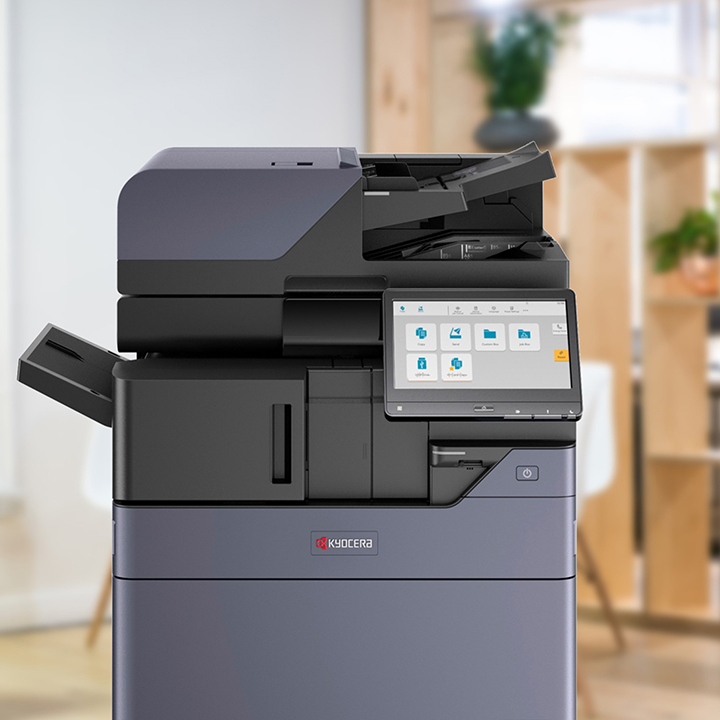Essential Tips for Secure Printing in the Shared Workspace

Essential Tips for Secure Printing in the Shared Workspace
As technology continues to evolve rapidly and more workplaces utilize shared workspaces for their day-to-day operations. Remote and hybrid working models are becoming increasingly popular, and the security of organizational data has transitioned from being protected centrally to depending on the internet connections of employees, making it more vulnerable to cyber-attacks and security breaches.
Hackers are well aware that an organization's security is only as strong as its weakest link, especially as the number of locations and devices connecting to shared databases and devices has significantly increased. All it takes is one security gap to cause chaos and serious consequences for the organization.
Therefore, as more people work in shared workspaces and use shared print devices, it is crucial to prioritize secure printing practices to protect sensitive data. Here are some essential tips for secure printing in the shared workspace:
1) Authenticate print jobs
Before printing, always authenticate print jobs to ensure that only authorized individuals have access to the printer. This can be done by requiring a login and password to access the printer or using other authentication technologies such as smart cards, biometric scanners or proximity badges.
2) Implement access controls
Implement access controls to restrict printer access based on job type, employee authorization levels or security classification of documents. This prevents unauthorized users from accessing sensitive documents and also ensures that print jobs are not left unattended in the printer tray.
3) Monitor printer activity logs
Regularly monitor printer activity logs to detect any unusual printing activities or unauthorized access. This can help prevent security breaches and deter potential hackers or other malicious actors from attempting to access the printer.
4) Encrypt data transmission
Ensure that data transmissions between devices are encrypted to protect sensitive information in transit. This helps prevent attackers from eavesdropping on network traffic and accessing sensitive information.
5) Use secure print technology
Use secure print technology such as pull printing or follow-me printing, which require users to authenticate themselves at the printer before documents are printed. This ensures that documents are not left unattended and picked up by unauthorized persons, reducing the risk of sensitive information being compromised.
While implementing these essential tips for secure printing can help reduce the risk of data breaches in shared workspaces, it's also important to consider the printing devices themselves. The security of multifunctional printers (MFPs) is a critical component of any comprehensive security strategy, particularly in shared workspaces where multiple employees may have access to the same device.
The TASKalfa 3554ci series
The TASKalfa 3554ci series devices have been released with a host of security enhancements that address areas such as security log management, certification validity, improved communication protocols, and email encryption.
The new range of devices is aligned with our overarching philosophy towards security; ensuring your devices and data get the protection they deserve:
- Data Confidentiality: Information assets handled by the MFP must not be leaked to a third party.
- Data Confidentiality: Information assets handled by the MFP must not be leaked to a tata Integrity: Assets must not be altered. They must be accurate and correct.
- Information Availability: Information must be immediately accessible while maintaining confidentiality and integrity.
- Authenticity: The accuracy of the author or the owner of the information assets can be validated.
- Accountability: The history of user and manager operations and the MFP behaviour can be tracked.
- Non-repudiation: Prevent repudiation of operations that have not been performed by MFP users and managers.
- Device Reliability: The behaviour and output of the MFP is correct and as expected.
These are the rock-solid foundations upon which sustainable success is built. There is no one quick fix to ensure optimal data security in the hybrid working age. An increase in devices, locations and access points have created a new wave of cybersecurity threats and business leaders continue to juggle new ways of working while trying to ensure their confidential data remains safe.
Nonetheless, there is reason to be optimistic: with the right mindset and the right tools, businesses can turn this period of great disruption into a platform to discover new opportunities for organic growth. This will be key to creating even greater value for their customers.

